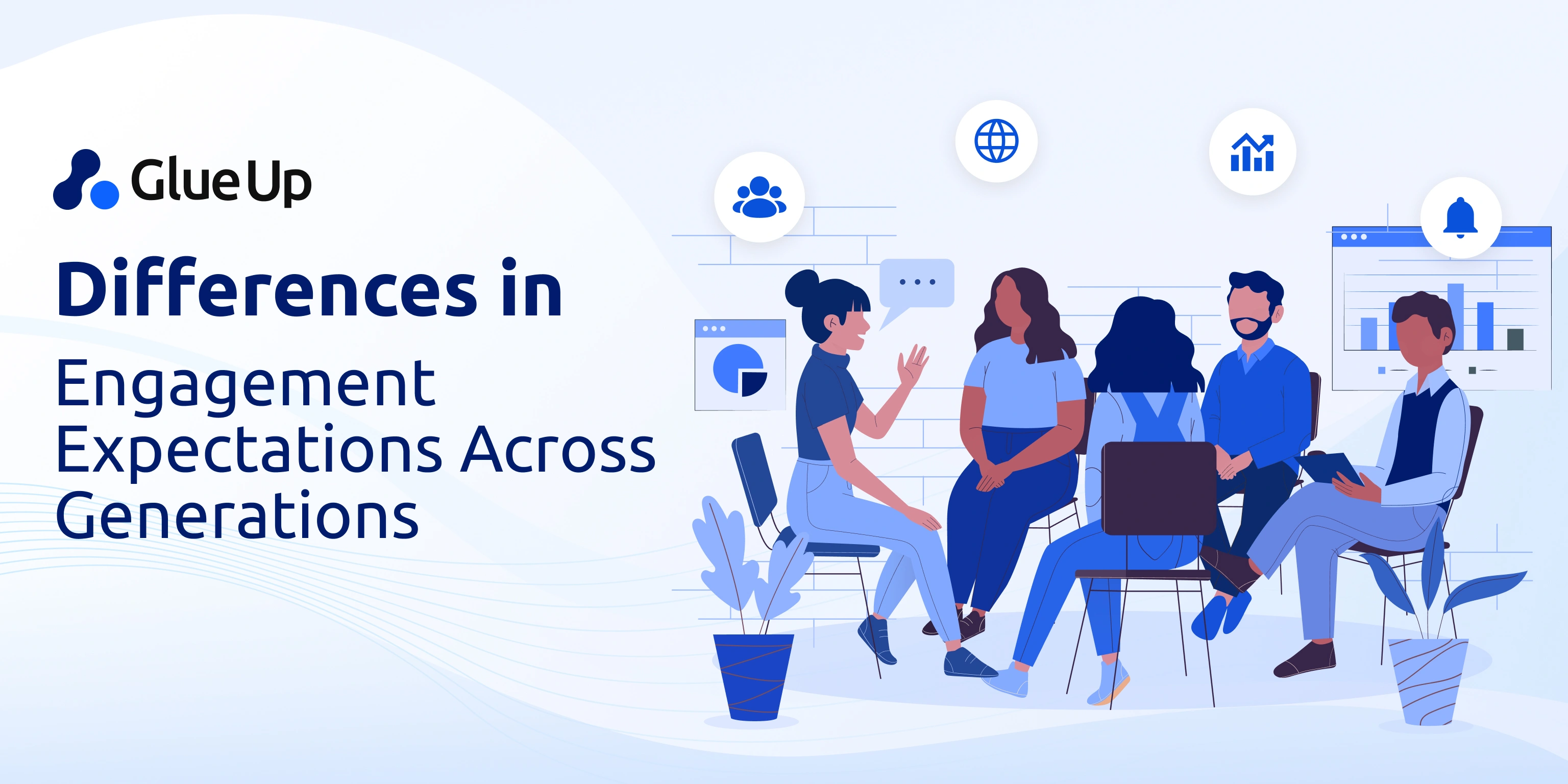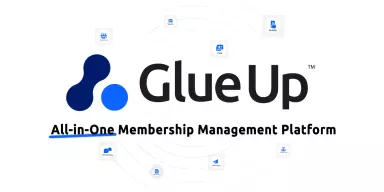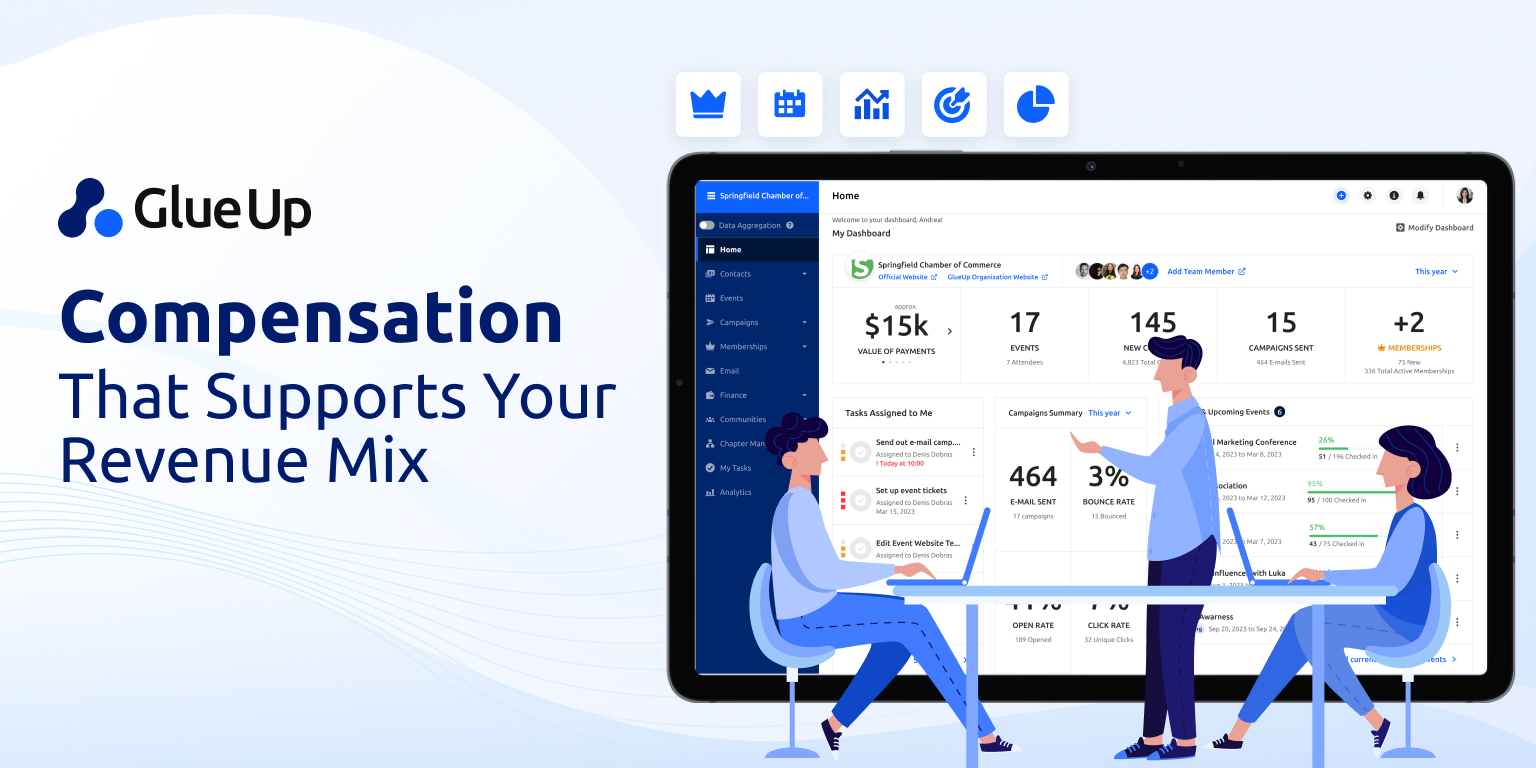
You’re leading in a world where the workforce spans five generations and the marketplace behaves like five separate economies operating at once. The same dynamic that shapes your multi-generational teams and customers is redefining how members engage, communicate, and perceive value. What began as a workplace diversity challenge has become an ecosystem management problem that requires precision, empathy, and data discipline. In modern associations, multi-generational membership now mirrors the complexity of today’s labor and consumer markets.
Baby Boomers still measure loyalty through stability, in-person relationships, and governance visibility. Gen X prizes efficiency, autonomy, and practical ROI. Millennials seek collaboration, social impact, and transparent leadership. Gen Z expects personalization at scale, gamified learning, and mobile-first accessibility.
These differences are behavioral economics at play within your association’s lifecycle. Hence, you need to know what makes each audience tick. After all, a significant chunk of your revenue depends on keeping each member generation engaged.
Therefore, in this post, you’ll explore how to operationalize that insight:
- How different generations define value, belonging, and participation.
- What communication and engagement strategies resonate across age cohorts.
- How technology like Glue Up’s AI-powered AMS connects these expectations through segmentation, analytics, and community design that unify diverse member journeys.
For a quick overview, you can watch the video below or book a demo to see how Glue Up helps associations create generationally intelligent membership experiences built for longevity and growth.
Key Takeaways
- Treat multi-generational membership as an engagement system, not a demographic challenge.
- Align communication, benefits, and experiences to generational behaviors and digital preferences.
- Use automation, segmentation, and analytics to scale personalization without losing cohesion.
- Centralize operations through Glue Up’s all-in-one association management software (AMS) to connect membership, finance, events, and communication.
- Build long-term engagement through community features, mentorship programs, and consistent data visibility.
Understanding Generational Differences in Membership Expectations
Research from Chandler Macleod confirms that organizations aligning systems to generational values outperform peers in retention and satisfaction metrics. In membership terms, that translates to higher renewal rates, stronger participation in hybrid events, and higher ARPM across generations.
But in order to get there, you first need to understand that engagement is not a single behavior. It’s a system of generationally conditioned expectations shaped by digital fluency, communication style, and perceived value. Each age group interacts with associations much like they interact with brands and workplaces: through experiences, relevance, and trust.
The Behavioral Shift Behind Member Expectations
What once defined engagement (periodic emails, annual conferences, and print newsletters) now feels outdated. Members expect personalization, data visibility, and two-way communication. According to Innovation Minds, Boomers and Gen X remain motivated by structure and professional credibility, while Millennials and Gen Z engage through collaboration, purpose, and digital access.
This shift mirrors the broader transformation seen in the workforce and consumer behavior. Generational diversity has changed how decisions are made, how long attention spans last, and how value is measured. The same logic applies to associations: members no longer stay for tradition; they stay for relevance.
A ResearchGate review on workplace expectations found that intergenerational alignment in communication and participation reduces disengagement by up to 35%. In practice, that means fewer non-renewals, higher event engagement, and more predictable member lifetime value.
Generational Drivers and Decision Logic
Understanding multi-generational membership means recognizing that each generation views engagement, loyalty, and return on investment through a different behavioral lens. Let’s look at each generation and what influences their decision-making:
Baby Boomers (Born 1946–1964)
Boomers represent the foundation of many associations. They value structure, tradition, and personal relationships. Most occupy senior positions and equate stability with credibility.
- Engagement Traits and Preferences: Boomers gravitate toward structured events, print publications, and leadership visibility. They value recognition, such as awards or board roles, and are most comfortable with formal, consistent communication channels.
- Decision Logic: Boomers join and renew memberships when they see professionalism, financial transparency, and legacy. They interpret value through institutional continuity, governance visibility, and clear reporting. So, if your membership budget report or finance dashboards demonstrate accountability, they see that as a sign of integrity.
Generation X (Born 1965–1980)
Gen X bridges analog and digital eras. Pragmatic and results-driven, they are self-directed leaders who appreciate efficiency and autonomy.
- Engagement Traits and Preferences: They prefer measurable ROI, transparent reporting, and reliable service. Gen X appreciates autonomy within membership, opting for member portals that allow them to manage renewals, event registration, and committee participation without friction.
- Decision Logic: They join when benefits are tangible and programs align with professional advancement. Gen X values time efficiency and impact, meaning they respond best to quantified outcomes such as certifications earned or advocacy success rates.
Millennials (Born 1981–1996)
Millennials are redefining membership economics. They prioritize authenticity, collaboration, and purpose. They are motivated by experiences that combine professional growth with social contribution.
- Engagement Traits and Preferences: They expect personalized digital communication, transparent governance, and consistent feedback loops. They prefer community platforms where they can contribute ideas, share knowledge, and co-create value. Hybrid events, social causes, and microlearning opportunities align with their professional rhythm.
- Decision Logic: Millennials decide to join when the mission resonates emotionally and intellectually. They evaluate membership through engagement value rather than transactional benefits. Recognition systems like digital badges, mentorship programs, and rewards initiatives influence renewal by making contributions visible.
Generation Z (Born 1997–2012)
Gen Z is the first fully digital generation and the most diverse. They view membership as an interactive, on-demand experience that must fit seamlessly into their mobile, real-time world.
- Engagement Traits and Preferences: Gen Z engages best through social channels, mobile-first member portals, and gamified experiences. They value diversity, inclusivity, and transparent communication. They expect information to be available instantly and designed for self-service.
- Decision Logic: They join when experiences are personalized and digital-first. Onboarding must be seamless, and ongoing engagement should be dynamic, with push notifications, polls, and short-form content. If they don’t see ongoing relevance, they disengage quickly. For Gen Z, engagement is not an annual commitment but a continuous subscription measured by relevance and ease of access.
The Economics of Engagement Diversity
Managing generational differences in businesses and associations is an exercise in operational agility. Associations that centralize data across engagement points like attendance, volunteering, and communications can map preferences and predict churn more accurately.
Analytics dashboards, Smart Lists segmentation, and AI-driven engagement scoring allow you to forecast which segments need reactivation campaigns and which are ready for leadership development.
This isn’t just about personalization; it’s about predictability. When you align content, cadence, and communication style with member expectations, you increase participation, advocacy, and renewal. The future of association growth lies in designing member experiences that adapt to behavioral patterns rather than enforcing uniformity.
The next step is actionable: creating a playbook of engagement strategies tailored to each generation, using segmentation, automation, and community management tools to scale personalization efficiently.
Designing Engagement Strategies Across Generations
Once you understand how each generation defines value, your next step is operational: converting behavioral insight into measurable engagement systems. The key challenge here is creating experiences that feel personal without fragmenting your brand.
Reframe Engagement as an Experience Ecosystem
Your association no longer competes only on benefits; it competes on experience design. Members expect the same convenience they find in consumer platforms. That means integrating your member portal, community tools, and finance dashboards into a unified ecosystem where access, recognition, and feedback are seamless.
Create Generationally Tuned Communication Pathways
Communication architecture must mirror behavioral economics. Boomers respond to leadership-driven updates and structured newsletters. Gen X prefers concise, data-backed summaries that highlight performance outcomes. Millennials engage with interactive stories and collaborative forums, while Gen Z values microcontent: polls, reels, and quick wins.
According to Naylor Association Adviser, associations that diversify communication formats by generation see up to 40% higher message retention. The key is cadence control; consistency without overload. Map each channel (email, social, app notification, etc.) to the audience segment most likely to act on it.
Program Value Through Personalization at Scale
Generational diversity demands personalization that feels human but scales efficiently. Use automation to surface what matters: upcoming events, mentorship matches, or policy updates relevant to each member profile.
Boomers might prefer leadership webinars or policy briefings; Gen X expects certification pathways; Millennials want community challenges or peer learning sessions; Gen Z thrives on microlearning and social gamification. AI-driven recommendations inside your AMS can align these interests automatically, improving both satisfaction and renewal predictability.
This is where your membership management software becomes strategic infrastructure, not just a database, but a personalization engine that operationalizes empathy.
Redesign Engagement Touchpoints Across the Lifecycle
Engagement isn’t linear. You need to redesign how members experience every touchpoint, from onboarding to renewal.
- Onboarding: Provide quick-start guides, welcome videos, and targeted FAQs for each generation. Younger members expect instant activation, while older members value a clear overview of governance and benefits.
- Mid-Cycle Engagement: Track participation across committees, forums, and events using analytics dashboards. Use those insights to trigger targeted outreach.
- Renewal: Automate reminders with context, not just invoices. Include summaries of achievements, contributions, or event participation to make renewal a moment of recognition.
This lifecycle approach ensures engagement doesn’t decline between membership years. It makes every interaction measurable and repeatable.
Build Community Intelligence and Inclusivity
Engagement is sustained through connection, not communication volume. A multi-generational community thrives when members see themselves represented in programming, leadership, and communication tone.
Use Glue Up’s community management add-on to balance formality and flexibility. Create mentoring programs where Boomers and Gen X provide guidance while Millennials and Gen Z contribute innovation and digital skills. According to Lions Clubs International, intergenerational mentorship not only increases retention but also strengthens leadership pipelines and inclusivity.
Measure What Matters
Finally, treat engagement as a measurable business outcome. Define KPIs that connect directly to member behavior: renewal rates by cohort, event participation by generation, average response time to communication, and net promoter scores by age segment.
Then, integrate these metrics into your AMS and finance dashboards so leadership can review engagement and ROI together. The associations that thrive will be those that manage member engagement with the same rigor they apply to financial management.
Connecting Every Generation Through One Unified System
You’ve seen how engagement evolves across generations. But sustaining it year after year, leader after leader, requires systems as adaptive as your members. That’s the real challenge of multi-generational membership: it’s not about pleasing everyone, it’s about connecting everyone through consistency, clarity, and access.
Glue Up gives you that foundation. It’s not another isolated tool; it’s a complete association management software (AMS) built to manage the complexity of modern membership ecosystems. Every workflow, from renewals to reporting, operates within the same infrastructure, ensuring every generational expectation is met without operational friction.
Think of it this way: your members experience one brand, not multiple systems. Whether they’re attending events, renewing dues, engaging in a community forum, or joining a mentorship program, Glue Up connects those actions behind the scenes. That’s the difference between “managing members” and “orchestrating relationships.”
Here’s how you use it strategically:
- Core Functionality: The Membership, Events, Finance, and Campaigns Modules work together to streamline operations. You can automate renewals, track event participation, manage invoices, and personalize communication.
- Add-Ons: Features like Speed Networking, Chapter Management, and AI-powered analytics give you scalability without adding complexity. They’re designed for growth, helping you serve every generation—from Boomers who value structure to Gen Z who expect instant access.
- Integrations: Glue Up integrates with major accounting software, payment gateways, event software, and communication platforms to ensure data consistency. That means no duplicate records, no lost touchpoints, and no generational blind spots.
Our philosophy is simple: technology should reflect human relationships, not replace them. When you connect every workflow, every department, and every generation in one ecosystem, you create continuity.
Book a demo today to see how Glue Up unifies every generation of your membership into one connected experience: operationally efficient, strategically intelligent, and built for long-term engagement.
Frequently Asked Questions
What is multi-generational membership?
It refers to associations with members spanning multiple age cohorts, each with unique engagement styles, communication preferences, and digital expectations.
Why do generational differences matter in associations?
Because engagement drivers vary. What motivates a Boomer (structure and recognition) differs from what motivates a Gen Z member (speed, personalization, and purpose).
How can associations manage diverse member expectations?
By segmenting audiences, personalizing communication, and leveraging AMS tools like Glue Up that automate engagement, reporting, and renewals in one system.
What Glue Up features help manage multi-generational membership?
Glue Up’s Membership, Community, and Campaigns Modules, combined with add-ons like Chapter Management and analytics dashboards, help you manage engagement across all cohorts.
How does integration improve engagement?
Integrated systems reduce friction. When your finance, events, and CRM data flow through one AMS, every member interaction becomes personalized, timely, and trackable.
Quick Reads
- How to Build a Revenue Engine with Association Management Software
- Add-On Cart for Member Retention & Growth
- Simplify Multi-Currency Payment Posting for Community Chapters With Glue Up + Paygage
- AI Automation for Event Registration & Beyond
- Integrating AI into CRM for Membership Growth
- How to Build a Chapter Event Calendar
- What Is All-In-One Association Software?
- AI-Powered Member Check-In Software


